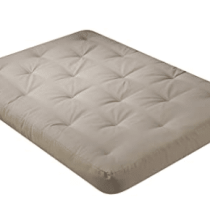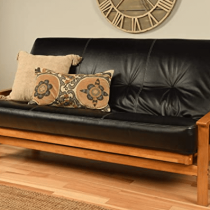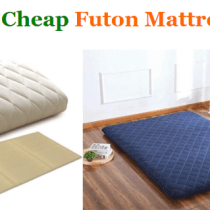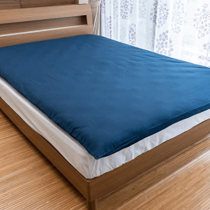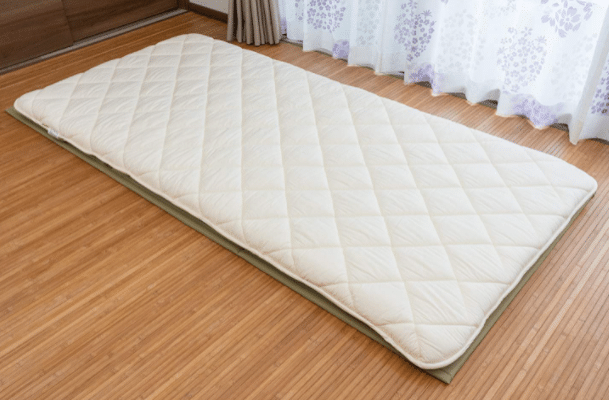
The global popularization of the Japanese culture has resulted in people drawing parallels between the Eastern and Western cultures. Since this is a very broad statement, let us narrow it down to our topic of concern, futon beds, and mattresses. Futon beds look very different at every place in the world.
The Western futon beds’ concept emerged from the Japanese futon beds. However, the two are very different. They differ not only in construction but also in purposes. While Japanese futon beds are great for spine alignment, Western futons might not have significant health benefits.
If you’re interested in the real Japanese futons, you should continue reading this article. Here, you will find everything you should know about Japanese futon beds.
What is a Futon?
A futon is something absolutely adored by anyone who appreciates minimalist living. The concept of Western futons came about after the Second World War when American soldiers go fascinated by the Japanese minimalist lifestyle.
The simple way to define a futon is to think of a minimalist bedding system. Therefore, whether traditional Japanese or Western, futon beds don’t usually have a bed frame and are either on or very close to the floor.
Be it Japanese or Western, the primary purpose of any futon is to minimize space consumption in the room. Futons can be put aside in the day. Therefore, you get dedicated sleeping space without having to place a massive bed in your room.
What is a Japanese Futon?
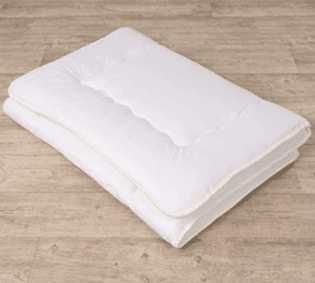
A Japanese futon or shikibuton is characterized by a cotton-filled 3-4 inches thick cushion that lays on a tatami mat. People sleep on it directly with a pillow and a duvet. A shikibuton is only complete once the entire bedding system comes together.
The entire bedding system is made to ensure the futon’s disappearance from the floor during the day. Therefore, it is generally lightweight and rollable. Sleeping on a traditional shikibuton has several health benefits, which is why it is growing popular in the world.
What is a Western Futon?
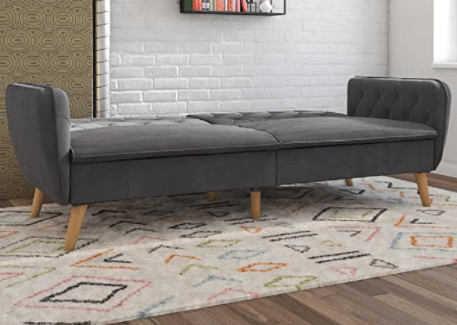
Futons can be a massive cultural shock to either Japanese people moving to the Western world or vice-versa. Americans generally categorize futons as pull-out sofa beds or a futon frame close to the floor.
People generally use sofa cushions or a floor mattress as a mattress for Western futons. They are made to replicate the full bed, but they can be bounded up in the day.
Differences Between a Western Futon and a Shikibuton
The Western futon and a shikibuton are two very different yet similar things. Therefore, let us have a look at the differences between the two.
- History: Shikibutons enjoy a rich history ranging back centuries. Western futons, on the other hand, came into being after the Second World War.
- Placement: A shikibuton is meant to be laid on a tatami mat or a tatami floor. However, the western futon mattress is laid either on a low bed frame or on a pull-out-sofa.
- Purpose: Shikibutons have been used as the primary sleeping space by the Japanese for thousands of years. However, a western futon is either used while traveling or when there are more-than-usual guests at home.
- Thickness: A western futon can be as thick as a bed mattress. However, shikibuton mattresses follow the tradition of not being thicker than 3-4 inches.
- Materials: A western futon mattress is generally made of memory foam, while a traditional shikibuton is made of cotton. However, you can also fund some foam variations of the shikibuton owing to globalization.
How Did the Japanese Futon Come into Being?
As mentioned in the previous section, shikibutons enjoy a massively rich history. This bedding system has been used in Japan for over centuries. It can be dated back to the first record of the Japanese cultural sleeping regime.
Shikibutons have been the primary sleeping space for people in Japan since the time of Emperor Jimmu. The only difference between an ordinary citizen’s shikibuton and a king’s shikibuton was of a layer of two. In the beginning, a shikibuton was nothing but a mat of woven hemp covered with a softer mat. However, as time passes, shikibutons kept on evolving.
It was during the Nara clan’s regime in the 8th century that the hemp and softer mattresses were lined with straw layers. This provided extra comfort. However, these three layers slowly turned into tatami mats as we know them today. At this time, royals used to add a few zabuton cushions to make the sleeping arrangement more comfortable.
As time furthered, everyone stopped sleeping directly on tatami mats. Slowly, the common Japanese people started placing cotton mats over the tatami mats too. And pillows and duvets started being added as people became more affluent.
It was in the 1970s that William Brouwer introduced the concept of Western futons. Since then, the Japanese futon has become thicker as per the Western norms. However, shikibutons are still laid on tatami floors or mattresses.
There is no saying where the future of the Japanese Futons lies. However, the growing thickness of the futons, along with people’s inclination towards beds, might lead to Japanese futon mattresses becoming as thick as bed mattresses.
Parts of a Japanese Futon Bedding
A traditional Japanese futon bedding is as simple as it gets. All you need to set up a traditional Japanese futon bed are the general sleeping necessities always available at home. Below is the breakdown of all the components of a Japanese Futon.
- Tatami – Tatami floor or mats are made of bamboo straw. They are used as a base for the futon to allow for extra hygiene, comfort, and breathability.
- Shikibuton – Shikibuton is the futon mattress’s base.
- Mattress– A Japanese futon mattress is traditionally stuffed with cotton.
- Kakebuton – A Kakebuton is a duvet that goes over the mattress for warmth and comfort.
- Moku –On cold days, Japanese people use Moku, or blanket, to cover themselves up.
- Makura – Makura is the pillow placed over the mattress to support the head. These pillows are generally filled with either foam or beans for maximum comfort.
What is a Traditional Japanese Futon Bedding Made of?
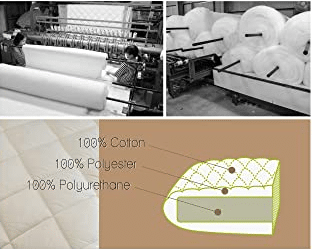
To understand the construction and materials used to make each of the bedding components, let us break each down.
- The tatami is generally made of bamboo straw. Therefore, it is very sturdy and safe to use for its hypoallergenic properties. The bamboo allows the bedding to stay cool and facilitates extra breathing.
- The mattress and the blanket are made of cotton. The mattresses are only two to three inches thick. However, a blanket can be thicker and can be laced with other elements such as wool to make it warmer.
- The duvet is made of hand-woven cotton. This incredibly soft cotton is environmentally friendly and stays fresh for many years.
- The pillow is traditionally small and made of beans. This allows the pillow to support the natural head’s shape by shifting the material according to the pressure applied to it.
However, it is important to note how demand for more synthetic materials has been emerging in the market. These materials are generally more durable and easily replaceable. Another change to the materials is the gradual shift of mattresses from being cotton-filled to foam-filled.
Types of Japanese Futon Mattress
Much like the entire bedding system, Japanese Futon Mattresses are also very simple. There are only two types of mattresses you can choose from. The difference solely lies in what the mattresses are made of.
Traditional Shikibuton
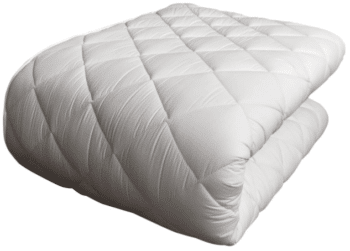
In the olden times, traditional shikibuton were nothing but two very thin and coarse mats. However, as time progresses, people started adding soft cushions into the mix. As a result, the traditional shikibuton emerged.
A traditional shikibuton is filled with high-quality cotton. Therefore, it allows the mattress to be soft and for the body to feel comfort rather than the floor’s hardness. A Traditional Shikibuton also has a zipped cotton cover made of either cotton duck weave or woven cotton.
Foam Futon
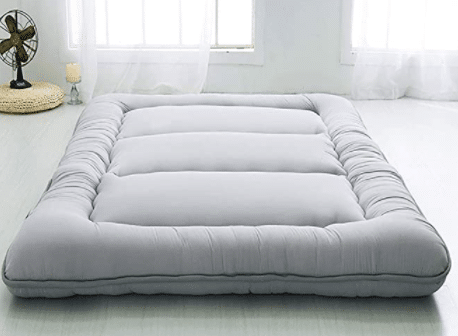
When the shikibuton inspired Americans to adapt to a minimalist lifestyle, they began using western futons. However, their bodies are not made the way Japanese bodies are, and neither is their culture. Therefore, it is difficult for them to sleep on traditional shikibutons. They started sleeping on foam futon mattresses made in striking resemblance to bed mattresses.
These foam futons have made a global impact. In return, they have also influenced the way Japanese people like to sleep. Therefore, some of the modern Japanese futons feature foam fillings. However, it is essential to note that these mattresses are not as simple to store as the Traditional shikibutons.
Lifestyle Convenience of Japanese Futons
There is a reason why American soldiers liked these futons‘ concept so much that they took it with them to their motherland. There is a reason why Japanese futons have been gaining popularity throughout the world. Believe it or not, Japanese futons are a great lifestyle convenience. Below are some ways in which Japanese futons enhance your lifestyle.
- Cleanliness: When you start sleeping on the floor over the Japanese futon beds, it is evident for you to keep the floor clean. This is why we see how Japanese tradition includes leaving shoes outside the house. Nobody wants to sleep on a dirty floor ad these mattresses allow for an overall clean home.
- Minimalism:Japanese futon beds are made to slide away during the day. They can be rolled and put into a cupboard while they are not in use. Therefore, you save a lot of space in your house while you’re not using a full-size bed in the room.
- Hygiene:When you compulsorily have to set aside your bed every morning and lay it down again every night, you will be able to maintain good hygiene. Your bed will be in motion, and you will regularly shift the duvet, so not stales will settle on the bed.
- Discipline: Japanese culture is all about discipline, and we can see that through the Japanese futon beds. Setting them up and aside every day requires a certain amount of discipline, reflecting in the person’s personality throughout the day.
- Room for Everyone:One of the most remarkable things about Japanese futon beds is that they allow space for as many people as you want in your house. You don’t have to look for bed frames; all you want is floor space and a cotton mattress.
- Inexpensive:One thing we cannot ignore about Japanese futon beds is how cheap they are. Getting a bed frame and bed mattress is an expensive affair. However, you can get a Japanese futon mattress and a blanket for less than half the price.
Health Benefits of Sleeping on Japanese Futons
Japanese futons are known to bring about massive health benefits. Not only are they preferred by Japanese people over the centuries, but they are also growing to be recommended by doctors in the Western world. Given below are some health benefits of sleeping on a Japanese futon bed.
- Firm back: you will be surprised to know how bad extremely soft beds are for your back. They are unnatural for your spine’s shape. The firm back provided by the cotton mattresses allows the spine to be in its natural S shape, providing better back support.
- Say no to back pain:When your spine is in its natural shape while you’re sleeping, you will experience less pain. This is enhanced by the cotton’s mild pressure relief, allowing your heavy and light areas to equate in weight.
- Perfect for Pregnancy:Pregnant women will prefer sleeping on their back on a futon than on a soft bed. A Japanese futon’s pressure relief is ideal for supporting their over-burdened back and belly.
- Great for Children:One of the biggest problems faced while using beds is the fear of children falling off in their sleep. While sleeping on a futon, that doesn’t matter since they will not be injured.
- Natural and Hypoallergenic:Traditional Japanese futons are made of entirely natural materials. The lack of chemicals will save you from accidentally triggered allergies.
Best Japanese Futon Mattress Recommendation – Product Reviews
Now that you know all about traditional Japanese bedding, your interest might have spiked a bit. Maybe now you want to give Japanese futon beds a try. Well, if you’re going to strengthen your back or live a minimalist lifestyle, you’ll love Japanese futon beds.
When you’re not a native to a culture, it becomes difficult to adapt its features. Therefore, you might not know which Japanese futon mattress to buy from the overwhelming variety. To make things simple for you, you have reviews five of the best Japanese futon mattresses available in the market. So, you can choose any one of them to kickstart your Japanese futon bed.
1. EMOOR Japanese Shikifuton Futon Mattress
Japanese futon mattresses are oftentimes considered to have only decent to bad softness and pressure relief. However, that is not the case with the EMOOR Japanese Shikifuton Futon mattress.
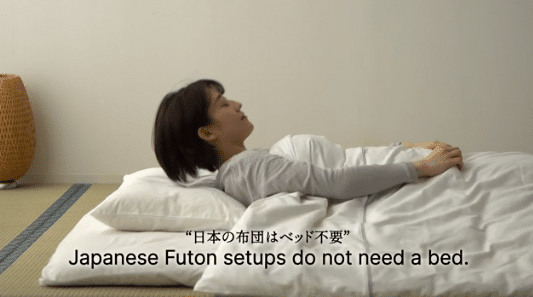
Another problem with cotton mattresses is the material’s tendency to go haywire, and the mattress feels uncomfortable. However, this product’s sandwich construction is perfect for allowing the cotton to stay in place. Therefore, you get uniform back support at all times.
This is a full-size Japanese mattress measuring 140 x 200cms. The mattress’s outer covering is made of 100% cotton for complete comfort. It is also an extremely lightweight product at only 11 pounds.
Storing and carrying the mattress is very easy. It can fold into a small file and be carried around in a bag. You can also use this mattress as a blankety for the sake of versatility. This is the perfect product if you’re trying to adopt a minimalistic lifestyle or are moving to a dorm.
The best way to maintain the mattress’s cover’s longevity is by storing it in a safe duvet to keep the light color from straining.
Pros
- Soft and comfortable covering.
- Versatile usage.
- Incredibly lightweight.
- Easy to store and carry.
- It has cushioned perfectly to allow for comfortable sleeping.
Cons
- Not the traditional Japanese futon mattress.
- It might not be the perfect sleeping alternative for westerners who are not used to sleeping on futons.
2. BJDesign Traditional Japanese Sleeping Mat
Are you looking for a low-maintenance Japanese futon mattress for your home? We recommend using the BJDesign Traditional Japanese Sleeping Mat for its comfortable sleeping experience. The mattress is perfect to use over a Tatami mat for breathable and undisturbed night’s sleep.
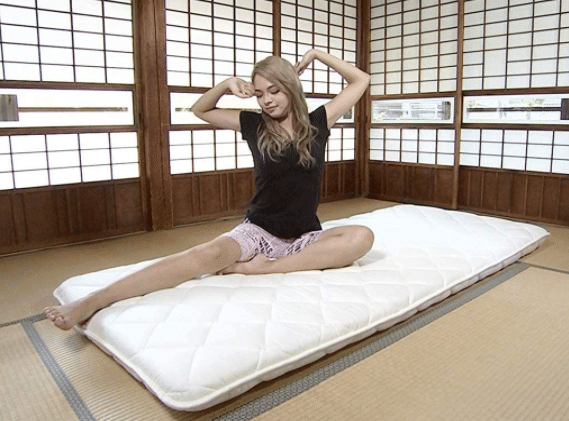
The mattress is ergonomically made to provide good back support. You might need some time to get used to such firm back support, but it is excellent for your spine. It reduced realignment strain on the back, aiding in better sleep.
Since the mattress is made of 100% cotton, it feels soft on the skin as well as on the back. The mattress has a three-layer design to keep it from deflating too soon. Natural construction is excellent for fighting allergies as well.
Much like most Japanese futon mattresses, the BJDesign Traditional Japanese Sleeping Mat is easy to maintain and store. It rolled into a small pile and kept in a cover for easy maintenance. The mattress’s quality is ensured by careful manufacturing. Each product by the company is made by artisan quality standards.
Pros
- Safe and comfortable to sleep on due to natural materials.
- Very low maintenance.
- Three-layer design to keep the mattress from deflating early.
- High-quality maintenance.
- Available in two sizes.
Cons
- Not as cushiony as most customers would like it to be.
- The cotton can become lumpy in only a few months of regular usage.
3. Luxton Home Foldable Japanese Shiki Futon Bed Mattress
The Luxton Home Foldable Japanese Shiki Futon Bed Mattress is a hybrid product. You can choose to buy this Japanese Shiki Futon Bed Mattress in six sizes. The Twin Long mattress measures39 x 83 inches.

It is perfect for the modern user because it is neither as firm as a traditional shikibuton mattress nor as soft as a memory foam bed mattress. This is an excellent purchase if you have kids at home and you want them to nap comfortably, without the stress of getting injured by falling from a high bed.
The mattress takes about three days to expand completely. Therefore, you cannot use it right away. However, the resulting product is so comfortable that you’ll not want to use any other Japanese futon mattress.
The filling and cover are made of 100% natural cotton. Therefore, you don’t have to face the risk of triggering allergies. The materials used for the construction are incredibly durable and soft. It is also straightforward to clean, maintain, and store.
Pros
- No off-gassing and offensive odors.
- Comfortable and durable cotton material construction.
- Easily foldable and portable.
- Hybrid product between a traditional Japanese futon mattress and a thick foam bed mattress.
- Comfortable to clean and maintain.
- Available in several sizes.
Cons
- Not suitable to use right after purchasing since you will have to wait three days for the mattress to completely expand.
4. MIINA Japanese Shiki Futon Sofa Bed Mattress
This high-quality futon mattress by MIINA is sure to win some hearts due to its quality cotton and polyester construction. The mattress is made in a way that it can double as a blanket in emergency situations.
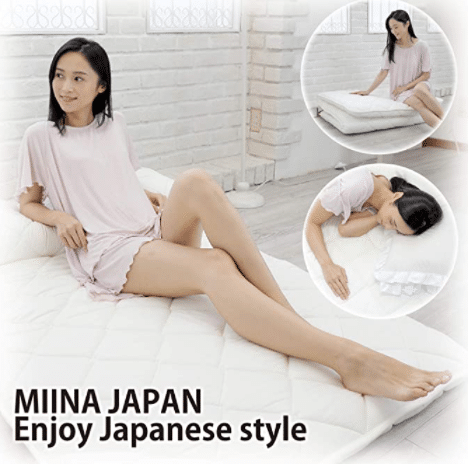
In case this mattress gets wet, it will dry quickly because it is made of fast-drying polyester. Therefore, maintaining the mattress is very easy. Another great thing about the MIINA Japanese Shiki Futon Sofa Bed Mattress is that it is made from traditional Japanese craftsmen to ensure superior quality.
If you’ve been dealing with back issues, you will appreciate how wonderful this mattress will feel while sleeping. It will allow your spine to be in alignment, fixing most problems. In case you have allergies, you will also like the 100% natural construction of the product.
The mattress can be used as a shikibuton mattress, yoga bat, sofa bed mattress, or even for your pets’ comfort. You can choose the mattress in the full size (55 x 78 inches) or the Queen size (61 x 78 inches).
Pros
- Spine alignment for therapeutic purposes.
- Versatile usage.
- It is made with the highest quality assurance in mind.
- Breathable and soft to the skin.
- Easy to store, carry, and maintain.
Cons
- Very expensive.
- It might deflate in a few months.
5. Fuli Japanese Traditional Shiki Futon (Shikibuton)
If you want the authentic experience of sleeping on a shikibuton bed, you have to look no further. The Fuli Japanese Traditional Shiki Futon is the most authentically Japanese mattress you can find in the market. Additionally, it is incredibly luxurious and soft.
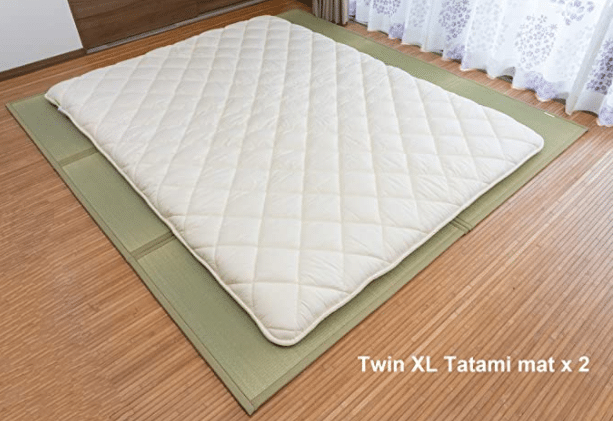
One of the most excellent things about this mattress is how affordable it is. You get comfortable and therapeutic sleeping experiences every night for a long time and do not even have to pay a fortune for it. To increase the product’s longevity, you can buy any of the gray, white, black, or blue covers sold separately by the company.
The mattress’ surface is mite and bacteria resistant. Therefore, if you live in a cool area, you will not have to hang it in the sun once a week to prevent unwanted buildup.
The mattress is made of 100% hygroscopic cotton exterior while being stuffed with 100% polyester. This construction is a wonderful take on the authenticity of the mattress. You can buy the mattress in four different sizes. You can also get extra filling if you super grade your mattress.
The FULI Japanese Traditional Shiki Futon will feel firm on the back while being comfortable enough to sleep on. It is best to dry clean the mattress to preserve its longevity.
Pros
- Durable product.
- Most authentic experience.
- Available in different sizes.
- Customizability options.
- Affordable choice.
- Easy to maintain.
Cons
- You will have to dry clean the mattress for maintenance.
- It is not made of natural materials.
Differences Between the Japanese Tatami Mat and the Japanese Futon Mattress
Both Tatami mat and Japanese futon mattresses are laid on the floor to make the traditional Japanese futon bed. On the surface, they might seem to be the same thing. However, there are some significant differences between the two. The major differences between a tatami mat and a Japanese futon mattress are as follows:
- A tatami mat is the first layer of any Japanese bedding. It is the first layer that is usually permanently laid on the floor for warmth and breathability. The Japanese futon mattress is not a permanent addition on the floor. It comes and goes off the floor according to your sleep schedule.
- A tatami mat is made of bamboo straw and other coarse and natural materials. A Japanese futon mat is full of cotton or foam.
- Most people do not prefer sleeping on a tatami mattress. If they are permanently laid on the floor, they only serve as a walking medium. The Japanese futon mattress, on the other hand, is never walked upon and is only used for either sleeping or lounging against for relaxation.
- Tatami mattress is often too coarse and thin to sleep on and provides no pressure relief. Unlike the Japanese futon mattress, they might be unhealthy to sleep on regularly.
How to Care for a Shikibuton
Not only are shikibutons traditional and inexpensive, but also easy to maintain. There are only a few things you should instill into your routine to increase the longevity of your Japanese futon mattress.
- Keep your Mattress Dry: It goes without saying, a wet cotton mattress and bedding will catch bacteria, mold, fungi, and unwanted odor. A wet bed is also impossible to sleep on. Therefore, keep it away from humid places at all costs.
- Do Not Leave it on the floor:If you leave your Japanese futon mattress on the floor all day, the entire minimalist purpose will be beaten. It is best to fold the mattress for safety throughout the day. This will also allow some motion into your bad, not allowing dust or insects to settle in.
- Flip it: It is always a good idea to flip your shikibuton mattress on a weekly basis. Flipping will keep the cotton from deflating or adapting your body’s shape.
- Store You Mattress in a Protective Cover:Whether you store your daily used mattresses in a cupboard or you store guest mattresses in your garage, it is best to store everything in a protective cover. Mattress not used for a long time will be protected from a lot of damage if they are stored in a protective, washable cover.
- Show Your Mattress Sun:Sunlight is the best solution to most bacteria and unwanted elements on any surface. It is best to spread your entire shikibuton bedding in the sun once a week and let sunlight and fresh air pass through it for a safer and fresher sleeping experience.
- Fluff it:Not only will fluffing your mattress keep it in good shape, but it will also keep it dry. You should fluff your bedding after you’ve laid it in the sun to allow the cotton inside to be as soft and fresh as possible.
- Cleaning:If you regularly dust and air your Japanese futon mattress, you might not feel the need to clean it. However, whenever you want to, it is best to dry clean it since any contact with water will ruin the mattress.
Endnotes
Sleeping on the floor is not a norm in Western culture. Maybe that is why Western futon mattresses are nothing like the original traditional Japanese futon beds. Japanese futon beds are comfortable, breathable, convenient, and beneficial for great back alignment.
Japanese futon beds have been used in the country for as far as history goes. However, this bedding has seen many evolutionary changes throughout the years. The popularity of Western futons has also brought about a marked change in Japanese futon mattresses, allowing them to be thicker.
Shikibuton is the core of Japanese sleep culture. They are intricate, delicate, and influence every aspect of the user’s life. They are truly wonderful. Maybe that’s why the world has a growing fondness towards them.


